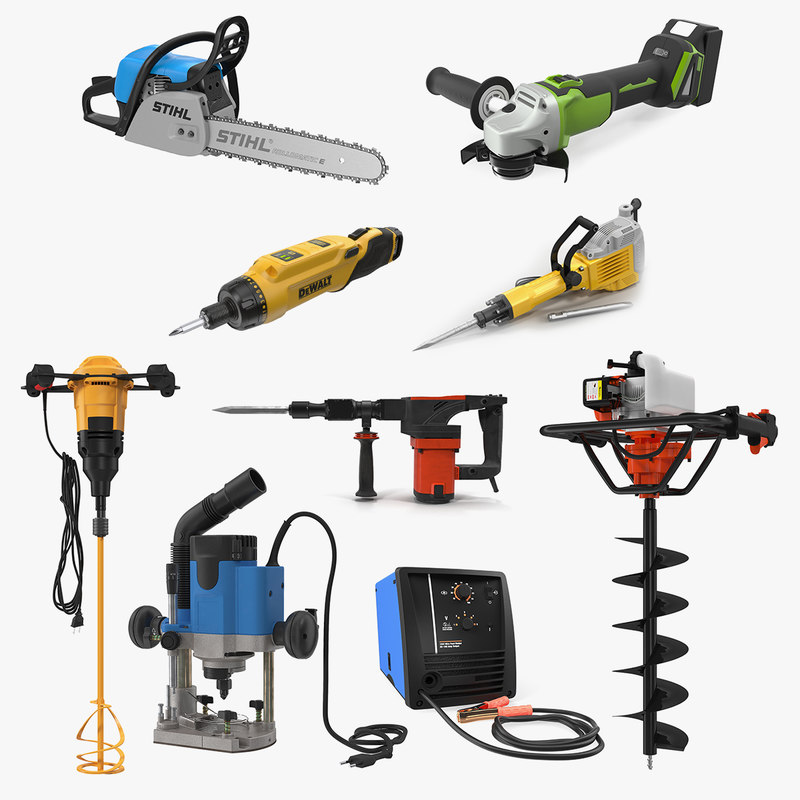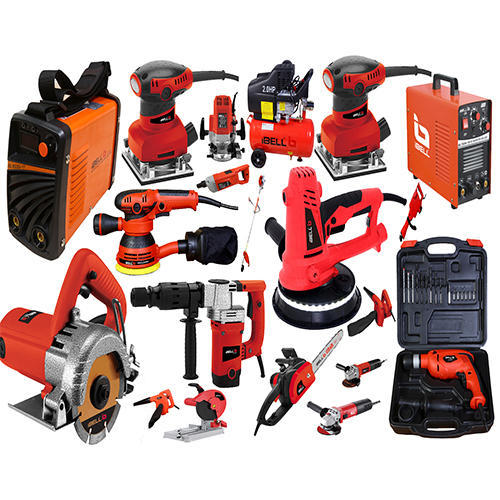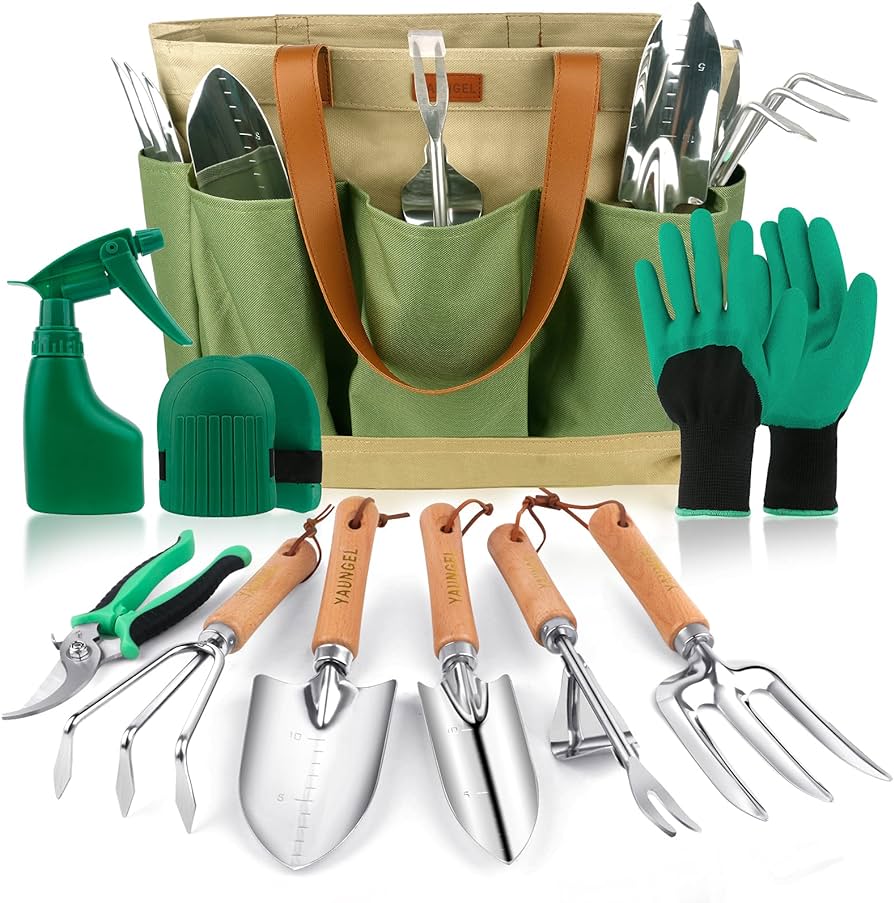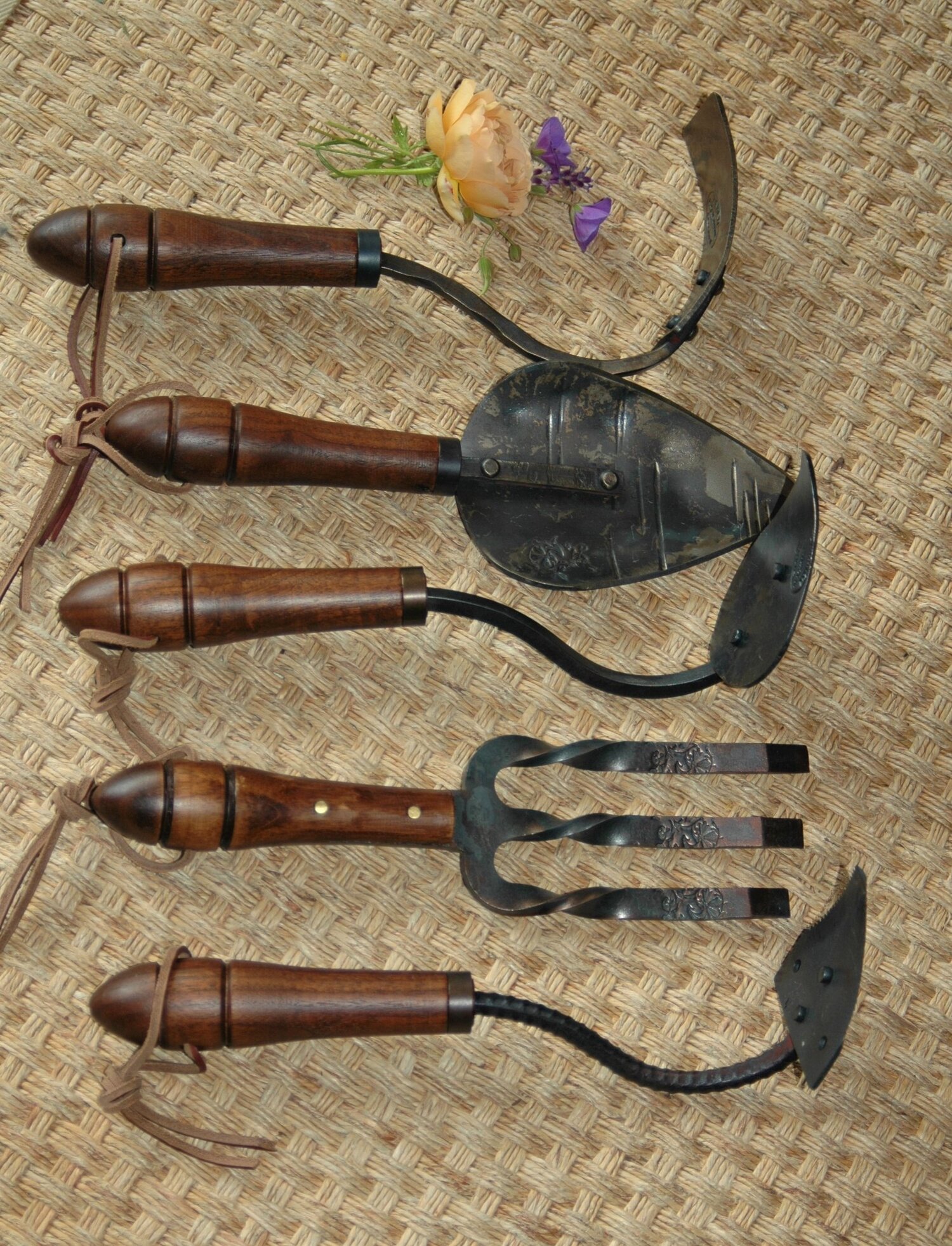Capitalizing on Seasonal Discounts for the Best Time to Buy Power Tools
Seasonal Discounts
Leveraging Seasonal Sales and Promotions for Maximum Savings
One perspective on the best time to buy power tools revolves around taking advantage of seasonal discounts and promotions offered by retailers. Throughout the year, retailers often align their sales and promotions with seasonal trends and holidays, offering significant discounts on power tools and other home improvement products.
One of the most popular times to buy power tools is during Black Friday and Cyber Monday sales events, typically held in late November. During these events, retailers offer deep discounts and doorbuster deals on a wide range of products, including power tools from leading brands. Shoppers can expect to find substantial savings on cordless drills, saws, sanders, and other power tools during these highly anticipated sales events.
Similarly, the holiday shopping season, which extends from late November through December, offers ample opportunities to score deals on power tools. Retailers often run extended sales events and promotions during this time, making it an ideal period to purchase power tools as gifts or for personal use. Additionally, many retailers offer special financing options and bundle deals that further enhance the value proposition for shoppers.
Spring and summer are also prime seasons for buying power tools, as retailers typically introduce new product lines and offer promotions to coincide with the start of the home improvement season. From March through June, shoppers can take advantage of spring sales events and promotions to upgrade their tool collection or tackle outdoor projects. Additionally, retailers may offer discounts on outdoor power equipment such as lawn mowers, trimmers, and pressure washers, making it a great time to invest in essential tools for maintaining outdoor spaces.
Moreover, end-of-season clearance sales, typically held in late summer and early fall, offer excellent opportunities to buy power tools at discounted prices. Retailers often discount older models and excess inventory to make room for new products, allowing savvy shoppers to score significant savings on power tools and accessories. Additionally, these clearance sales may coincide with back-to-school promotions, making it an ideal time for DIY enthusiasts and students to stock up on essential tools for projects and coursework.

New Product Releases
Seizing Opportunities with New Product Releases as the Best Time to Buy Power Tools
Another perspective on the best time to buy power tools focuses on the release of new products and innovations in the industry. Manufacturers frequently introduce new power tool models and technologies to meet evolving consumer demands and market trends, presenting opportunities for consumers to upgrade their tool collection and take advantage of introductory offers.
One of the prime times to buy power tools is when manufacturers release new product lines or introduce innovative features and technologies. These launches often coincide with trade shows, industry events, and press announcements, generating excitement and anticipation among consumers. Retailers may offer special introductory pricing and promotions to coincide with these launches, making it an ideal time to purchase new power tools at competitive prices.
Additionally, manufacturers may offer trade-in or upgrade programs that incentivize consumers to trade in their old tools for discounts on new models. These programs not only encourage consumers to upgrade to the latest technology but also help manufacturers generate buzz and drive sales for new product releases. By taking advantage of trade-in offers and promotions, consumers can upgrade their tool collection while enjoying significant savings on new power tools.
Furthermore, retailers may offer exclusive pre-order discounts and incentives for consumers who reserve new power tool models before they are officially released. Pre-order promotions often include discounted pricing, bundled accessories, and extended warranty offers, providing early adopters with added value and savings on their purchases. By participating in pre-order promotions, consumers can secure new power tools at discounted prices and be among the first to experience the latest innovations in the industry.
Moreover, manufacturers may offer limited-time promotional pricing and incentives to celebrate milestone anniversaries, commemorate special events, or promote new partnerships. These promotional campaigns may include limited-edition tool sets, commemorative bundles, or special discounts on select models, providing consumers with unique opportunities to purchase power tools at discounted prices while enjoying exclusive perks and bonuses.

Off-Season Sales
Exploring Year-Round Savings and Clearance Events
While seasonal discounts and new product releases attract significant attention, off-season sales offer hidden opportunities for savvy shoppers to buy power tools at discounted prices. Retailers often hold clearance events and sales promotions throughout the year to clear out excess inventory and make room for new products, providing consumers with year-round opportunities to score deals on power tools.
One of the best times to buy power tools at discounted prices is during off-season clearance sales, typically held in late summer and early fall. Retailers often discount older models and excess inventory to make room for new products, offering significant savings on power tools and accessories. Shoppers can expect to find discounted prices on a wide range of power tools, including drills, saws, sanders, and more, as retailers make room for new seasonal merchandise.
Additionally, retailers may offer special promotions and clearance events during slower sales periods, such as after major holidays or during transitional seasons. These off-season sales events provide consumers with opportunities to buy power tools at discounted prices while taking advantage of special financing options, bundle deals, and other incentives. By timing purchases to coincide with off-season sales, shoppers can maximize savings and get the most value out of their power tool purchases.
Moreover, online retailers and auction platforms often feature year-round deals and discounts on power tools, providing consumers with access to discounted prices and special promotions outside of traditional retail channels. Online clearance sales, flash deals, and auction listings offer additional opportunities for shoppers to find discounted power tools and accessories, making it easy to compare prices and find the best deals from the comfort of home.
Furthermore, clearance outlets and discount stores may offer discounted prices on power tools year-round, as they specialize in selling surplus inventory and discontinued merchandise at discounted prices. These outlets often feature brand-name power tools at significantly reduced prices, providing consumers with access to discounted products that may not be available through traditional retail channels.

Manufacturer Rebates
Leveraging Rebate Offers and Special Incentives for Maximum Value
Manufacturer rebates offer another perspective on the best time to buy power tools, providing consumers with opportunities to unlock additional savings and incentives on their purchases. Manufacturers frequently offer rebate programs and special incentives to promote sales, encourage brand loyalty, and reward consumers for their purchases, making it an ideal time to buy power tools at discounted prices.
One of the most common types of manufacturer rebates is mail-in rebates, where consumers receive a cash rebate by submitting proof of purchase and completing a rebate form. These rebates may be offered on specific power tool models or as part of promotional campaigns to stimulate sales and generate consumer interest. By taking advantage of mail-in rebates, consumers can receive cash back on their power tool purchases, effectively reducing the overall cost and maximizing savings.
Additionally, manufacturers may offer instant rebates or discounts at the point of sale, where consumers receive an immediate price reduction on their power tool purchase. Instant rebates are often applied automatically at checkout or through promotional codes, providing consumers with instant savings and incentives to make a purchase. By leveraging instant rebates, consumers can enjoy discounted prices on power tools without the need for mail-in forms or additional steps.
Moreover, manufacturers may offer special financing options and incentives to promote sales and encourage consumers to purchase power tools. These financing offers may include zero percent financing, deferred payment options, or low-interest financing plans, making it easier for consumers to afford high-ticket power tool purchases. By taking advantage of special financing options, consumers can spread out the cost of their power tool purchases over time while enjoying the benefits of owning quality tools.
Furthermore, manufacturers may offer limited-time promotions and bundle deals that include power tools, accessories, and additional incentives. These promotions may feature discounted prices, free accessories, extended warranties, or other value-added benefits to incentivize consumers to make a purchase. By participating in promotional campaigns and taking advantage of bundle deals, consumers can maximize savings and get the most value out of their power tool purchases.

End-of-Year Clearance
Exploring Year-End Deals and Closeout Sales for Maximum Discounts
One perspective on the best time to buy power tools revolves around end-of-year clearance sales and closeout events, where retailers offer significant discounts on excess inventory and discontinued models to make room for new products in the upcoming year. These clearance sales provide consumers with opportunities to score deals on power tools and accessories at heavily discounted prices, making it an ideal time to buy power tools at maximum savings.
One of the best times to buy power tools at discounted prices is during end-of-year clearance sales, typically held in late December and early January. Retailers often discount older models, excess inventory, and discontinued merchandise to clear out space for new products in the upcoming year, offering substantial savings on power tools and accessories. Shoppers can expect to find discounted prices on a wide range of power tools, including drills, saws, sanders, and more, as retailers make room for new seasonal merchandise.
Moreover, end-of-year clearance sales may coincide with holiday shopping season, providing consumers with additional opportunities to score deals on power tools as gifts or for personal use. Retailers often run extended sales events and promotions during this time, making it an ideal period to purchase power tools at discounted prices. Additionally, many retailers offer special financing options and bundle deals that further enhance the value proposition for shoppers.
Additionally, closeout events and liquidation sales offer consumers opportunities to buy power tools at heavily discounted prices as retailers clear out excess inventory and discontinued models. Closeout sales may feature steep discounts on select power tool models, making it an ideal time for savvy shoppers to score deals on high-quality tools at maximum savings. By timing purchases to coincide with closeout events, consumers can take advantage of discounted prices and get the most value out of their power tool investments.
Unveiling the Performance and Efficiency of Brushed vs Brushless Power Tools
Performance and Efficiency
Comparing Power Output, Runtime, and Overall Efficiency
When evaluating brushed vs brushless power tools from a performance and efficiency standpoint, several key factors come into play. Brushed motors have been the traditional choice for power tools, but brushless technology has emerged as a more advanced alternative, offering enhanced performance and efficiency in various applications.
Brushed power tools utilize carbon brushes to deliver electrical current to the motor’s armature, resulting in mechanical friction and wear over time. This friction can lead to energy loss and reduced efficiency, impacting the overall performance of the tool. In contrast, brushless power tools employ electronic commutation to deliver power to the motor, eliminating the need for brushes and minimizing mechanical friction. This design allows brushless motors to operate more efficiently, delivering higher power output and longer runtime compared to brushed counterparts.
From a performance perspective, brushless power tools often outperform brushed models in terms of power output and torque. Brushless motors can deliver higher power densities and more precise control over speed and torque, making them ideal for demanding applications such as heavy-duty drilling, cutting, and fastening tasks. Additionally, brushless power tools typically feature electronic motor control systems that optimize performance and adjust power delivery based on the specific task at hand, ensuring optimal efficiency and performance in various operating conditions.
Moreover, brushless power tools are known for their extended runtime and battery life compared to brushed models. The elimination of brushes reduces friction and wear within the motor, resulting in less heat generation and lower energy consumption. As a result, brushless tools can operate for longer periods on a single battery charge, making them ideal for continuous use in professional settings where downtime is minimized, and productivity is paramount.

Size and Weight
Examining Size and Weight Considerations of Brushed vs Brushless Power Tools
Subtitle: Balancing Portability, Maneuverability, and Performance
When comparing brushed vs brushless power tools, size and weight considerations play a crucial role in determining the suitability of a tool for various applications. Both brushed and brushless models come in a variety of sizes and configurations, each offering unique advantages and trade-offs in terms of portability, maneuverability, and performance.
Brushed power tools are generally known for their compact size and lightweight design, making them well-suited for applications where portability and maneuverability are critical. The simplicity of brushed motor design allows for a smaller form factor, making brushed tools ideal for tasks that require tight spaces or overhead work. Additionally, the lightweight construction of brushed tools makes them easier to handle and transport, reducing fatigue during extended use.
However, brushed power tools may sacrifice performance and efficiency compared to their brushless counterparts due to the inherent limitations of brushed motor technology. The presence of brushes and mechanical friction can result in energy loss and reduced power output, limiting the overall performance of brushed tools, particularly in demanding applications that require high torque or extended runtime.
In contrast, brushless power tools typically feature larger and heavier designs compared to brushed models, primarily due to the inclusion of electronic components and advanced motor control systems. While this may impact portability and maneuverability to some extent, brushless tools offer significant performance advantages that justify the trade-off in size and weight.
Brushless motors are known for their superior power output and efficiency, making them ideal for heavy-duty applications that demand high torque and extended runtime. Despite their larger size and weight, brushless tools deliver unmatched performance and versatility, allowing users to tackle a wide range of tasks with ease and precision.
Moreover, advancements in brushless motor technology have led to the development of compact and lightweight brushless power tools that rival their brushed counterparts in size and weight. These compact brushless tools offer a balance of portability, maneuverability, and performance, making them suitable for professionals and DIY enthusiasts who prioritize versatility and efficiency.

Cost and Affordability
Analyzing the Cost and Affordability of Brushed vs Brushless Power Tools
When comparing brushed vs brushless power tools, cost and affordability are significant factors that influence purchasing decisions for both professionals and DIY enthusiasts. While brushless technology offers numerous performance advantages, it often comes with a higher price tag compared to brushed models. However, when considering the long-term savings and value proposition, the investment in brushless tools may outweigh the initial cost for many users.
Brushed power tools are generally more affordable than their brushless counterparts, making them an attractive option for budget-conscious consumers and occasional users. The simplicity of brushed motor design and manufacturing processes contributes to lower production costs, resulting in lower retail prices for brushed tools compared to brushless models.
However, while brushed power tools may offer a lower upfront cost, they may incur higher long-term expenses due to maintenance, repair, and replacement costs associated with brushes and mechanical wear. Brushes are a common point of failure in brushed motors and may require periodic replacement to maintain optimal performance, adding to the total cost of ownership over time.
In contrast, brushless power tools typically come with a higher initial investment compared to brushed models, reflecting the advanced technology and components involved in their construction. The absence of brushes and advanced motor control systems contribute to the higher production costs of brushless tools, resulting in higher retail prices for consumers.
Despite the higher upfront cost, brushless power tools offer significant long-term savings and value proposition due to their enhanced performance, efficiency, and durability. Brushless motors are more energy-efficient and require less maintenance compared to brushed motors, resulting in lower operating costs and reduced downtime over the tool’s lifespan.
Moreover, the superior performance and extended lifespan of brushless power tools justify the higher initial investment for many users, particularly professionals and tradespeople who rely on their tools for daily use and depend on performance and reliability in demanding applications. The increased productivity, efficiency, and durability of brushless tools contribute to a higher return on investment and overall value proposition over time.
Additionally, advancements in brushless motor technology and manufacturing processes have led to cost reductions and increased affordability of brushless power tools in recent years. As technology continues to evolve, the price gap between brushed and brushless models may narrow, making brushless technology more accessible to a broader range of users.

Durability and Longevity
Assessing the Durability and Longevity of Brushed vs Brushless Power Tools
Durability and longevity are critical considerations when comparing brushed vs brushless power tools, as users seek tools that can withstand the rigors of daily use and provide reliable performance over time. Both brushed and brushless models offer distinct advantages and trade-offs in terms of wear and tear, maintenance requirements, and overall lifespan.
Brushed power tools are known for their simplicity and reliability, with fewer electronic components and moving parts compared to brushless models. The brushed motor design relies on carbon brushes to deliver electrical current to the motor’s armature, resulting in mechanical friction and wear over time. While brushes are a common point of failure in brushed motors, they are relatively easy and inexpensive to replace, extending the lifespan of the tool.
However, the presence of brushes and mechanical friction in brushed motors can contribute to increased wear and tear on internal components, leading to reduced durability and reliability compared to brushless models. The constant contact between brushes and commutator surfaces can result in brush wear, arcing, and overheating, potentially impacting the overall performance and longevity of brushed tools, particularly in demanding applications.
In contrast, brushless power tools offer enhanced durability and longevity compared to brushed models due to the absence of brushes and reduced mechanical friction. Brushless motors utilize electronic commutation to deliver power to the motor, eliminating the need for brushes and minimizing wear on internal components. This design feature results in lower maintenance requirements and extended lifespan for brushless tools, making them ideal for professional use and heavy-duty applications.
Moreover, brushless power tools are typically sealed to prevent dust and debris ingress, further enhancing their durability in harsh working environments. The sealed construction protects internal components from damage and ensures reliable performance in various operating conditions, contributing to the overall longevity of brushless tools.
Additionally, advancements in brushless motor technology have led to improved efficiency and thermal management systems, further enhancing the durability and reliability of brushless power tools. These enhancements reduce heat generation and energy loss during operation, resulting in longer tool lifespan and consistent performance over time.

Environmental Impact
Evaluating the Environmental Impact of Brushed vs Brushless Power Tools
The environmental impact of brushed vs brushless power tools is an important consideration as individuals and industries increasingly prioritize sustainability and energy efficiency in their purchasing decisions. Both brushed and brushless models have distinct environmental implications in terms of energy consumption, emissions, and overall sustainability throughout their lifecycle.
Brushed power tools are generally less energy-efficient compared to brushless models due to the mechanical friction and wear associated with brushes and commutators. The constant contact between brushes and commutator surfaces results in energy loss and heat generation, contributing to higher energy consumption during operation. While brushed tools may be suitable for occasional or light-duty use, their higher energy consumption makes them less environmentally friendly compared to brushless models, particularly in applications that require continuous or heavy-duty operation.
Moreover, brushed power tools may generate emissions and contribute to air pollution during operation, particularly in gasoline-powered models used in outdoor applications such as landscaping and construction. Gasoline-powered brushed tools emit pollutants such as carbon monoxide, nitrogen oxides, and volatile organic compounds, contributing to air quality degradation and environmental harm.
In contrast, brushless power tools offer superior energy efficiency and reduced emissions compared to brushed models, making them a more environmentally friendly choice for users concerned about sustainability. Brushless motors utilize electronic commutation to deliver power to the motor, eliminating the mechanical friction and wear associated with brushes and commutators. This design feature results in lower energy consumption and reduced heat generation during operation, contributing to energy savings and environmental preservation.
Enhancing Consumer Experience through Free Power Tools
Empowering Users with Complimentary Tools for Enhanced Utility
In today’s competitive market, businesses are constantly seeking innovative ways to attract and retain customers. Offering free power tools alongside products or services has emerged as a strategic approach to enhance consumer satisfaction. By providing these tools at no additional cost, companies not only add value to their offerings but also create a unique selling proposition that sets them apart from competitors.
From the perspective of consumer satisfaction, the provision of free power tools yields multiple benefits. Firstly, it increases the perceived value of the primary product or service. Consumers are more likely to choose a product that offers additional utility through complimentary tools, even if the upfront cost may be slightly higher than alternatives. This perception of receiving something extra for free enhances the overall satisfaction derived from the purchase.
Moreover, free power tools contribute to customer loyalty and retention. When consumers receive a valuable tool at no extra cost, they feel appreciated and are more inclined to make repeat purchases from the same brand. This not only strengthens brand loyalty but also reduces customer churn, leading to long-term profitability for businesses.
Additionally, free power tools can serve as effective marketing tools. Word-of-mouth marketing is potent in today’s digital age, and consumers who are delighted by the complimentary tools are likely to share their positive experiences with friends and family. This organic promotion helps businesses reach a wider audience and acquire new customers without significant marketing expenditures.
Furthermore, the provision of free power tools fosters a sense of trust and transparency between businesses and consumers. By openly offering valuable tools without hidden charges, companies demonstrate their commitment to customer satisfaction and building long-term relationships. This transparency cultivates trust and goodwill, which are invaluable assets in today’s competitive marketplace.
In conclusion, from the perspective of consumer satisfaction, the provision of free power tools enhances the overall consumer experience, increases perceived value, fosters loyalty, serves as a marketing tool, and builds trust between businesses and consumers.

Driving Economic Growth through Free Power Tools
Stimulating Productivity and Innovation in the Marketplace
The economic impact of providing free power tools extends beyond individual consumer satisfaction to broader implications for market dynamics and growth. From an economic standpoint, the strategic distribution of complimentary tools has the potential to stimulate productivity, foster innovation, and drive overall economic growth.
Free power tools can significantly lower barriers to entry for individuals or businesses looking to engage in certain activities that require specialized equipment. By eliminating the upfront cost of acquiring essential tools, more aspiring entrepreneurs, hobbyists, and small businesses can participate in various sectors, ranging from construction and DIY projects to creative endeavors such as woodworking or crafting.
Moreover, the availability of free power tools encourages innovation and entrepreneurship by enabling individuals to experiment with new ideas and projects without the financial burden of purchasing expensive equipment. This fosters a culture of creativity and experimentation, leading to the emergence of innovative products, services, and business models that contribute to economic diversification and growth.
Furthermore, the widespread distribution of complimentary tools creates ripple effects across related industries, generating demand for ancillary products and services. For example, the increased adoption of power tools may stimulate demand for accessories, maintenance services, and training programs, thereby creating new business opportunities and supporting job creation in the supply chain.
Additionally, from a macroeconomic perspective, the provision of free power tools can have multiplier effects on overall productivity and efficiency. By equipping individuals and businesses with the necessary tools to perform tasks more effectively, the economy as a whole benefits from increased output and resource utilization, leading to higher levels of economic activity and prosperity.
In conclusion, the economic impact of providing free power tools extends beyond individual consumers to encompass broader implications for productivity, innovation, and economic growth. By lowering barriers to entry, fostering creativity, stimulating demand for ancillary products and services, and enhancing overall productivity, complimentary tools play a significant role in driving economic development.

Promoting Environmental Sustainability through Free Power Tools
Empowering Sustainable Practices in Construction and Maintenance
The provision of free power tools presents an opportunity to promote environmental sustainability by encouraging the adoption of eco-friendly practices in construction, maintenance, and related industries. From an environmental perspective, complimentary tools can contribute to resource conservation, waste reduction, and the promotion of renewable energy technologies.
One of the primary ways in which free power tools support environmental sustainability is through the promotion of energy-efficient technologies. Many modern power tools are designed to minimize energy consumption while maximizing performance, thereby reducing the overall carbon footprint associated with construction, renovation, and maintenance activities.
Moreover, by providing free power tools, businesses can incentivize the use of renewable energy sources such as solar or wind power. For example, companies may offer solar-powered or cordless power tools as complimentary items, encouraging users to embrace clean energy solutions and reduce their dependence on fossil fuels.
Furthermore, the availability of free power tools can facilitate the adoption of sustainable building practices, such as green construction and renovation techniques. By equipping individuals and businesses with the necessary tools and resources, companies empower them to implement energy-efficient designs, materials, and technologies that reduce environmental impact and promote long-term sustainability.
Additionally, complimentary tools can contribute to waste reduction through improved efficiency and precision in construction and maintenance activities. By providing users with high-quality power tools, businesses enable them to complete tasks more effectively, minimizing material waste and resource consumption throughout the project lifecycle.
In conclusion, from an environmental sustainability perspective, the provision of free power tools plays a crucial role in promoting energy efficiency, encouraging the adoption of renewable energy technologies, facilitating sustainable building practices, and reducing waste in construction and maintenance activities.

Fostering Social Empowerment through Free Power Tools
Bridging Socioeconomic Gaps and Empowering Communities
The distribution of free power tools has profound social implications, particularly in terms of empowering individuals and communities, bridging socioeconomic gaps, and fostering inclusivity in access to essential resources. From a social impact perspective, complimentary tools serve as catalysts for empowerment, skill development, and community resilience.
One of the primary ways in which free power tools contribute to social empowerment is by democratizing access to essential resources and opportunities. By providing tools at no cost, businesses ensure that individuals from diverse socioeconomic backgrounds have equal access to resources needed for various activities, including home improvement, repairs, and small-scale entrepreneurship.
Moreover, complimentary tools play a crucial role in skill development and capacity building, particularly among underserved communities and marginalized groups. By equipping individuals with the necessary tools and training, companies empower them to acquire valuable skills, pursue entrepreneurial ventures, and participate meaningfully in economic activities.
Furthermore, the provision of free power tools strengthens community resilience by enabling individuals and neighborhoods to undertake DIY projects, repairs, and maintenance tasks independently. In times of crisis or emergencies, such as natural disasters or infrastructure failures, communities equipped with essential tools are better prepared to respond and recover, reducing reliance on external assistance.
Additionally, from a cultural perspective, complimentary tools can preserve traditional craftsmanship and promote cultural heritage by providing individuals with the means to engage in artisanal practices and creative pursuits. By preserving and passing down traditional skills and knowledge, free power tools contribute to the preservation of cultural identity and heritage within communities.
In conclusion, from a social impact perspective, the provision of free power tools fosters empowerment, skill development, and community resilience by democratizing access to essential resources, promoting inclusivity, strengthening local economies, and preserving cultural heritage.

Leveraging Free Power Tools as a Strategic Business Tool
Enhancing Competitive Advantage and Driving Growth
From a business strategy perspective, the provision of free power tools represents a strategic tool for enhancing competitive advantage, driving customer engagement, and fostering sustainable growth. By incorporating complimentary tools into their offerings, businesses can differentiate themselves in the market, attract new customers, and build long-term relationships with existing ones.
One of the key advantages of offering free power tools is the ability to differentiate products or services from competitors. In crowded markets where products or services are largely commoditized, the inclusion of complimentary tools adds unique value and creates a compelling proposition for consumers, thereby increasing brand appeal and market share.
Moreover, free power tools serve as powerful customer acquisition and retention tools. By offering valuable tools at no additional cost, businesses can attract new customers who perceive the added value in their offerings. Furthermore, complimentary tools contribute to customer loyalty and repeat purchases, as consumers are more likely to patronize brands that provide ongoing value and support.
Furthermore, the provision of free power tools enables businesses to upsell or cross-sell related products or services. For example, companies can offer complimentary power tools with the purchase of certain products and subsequently promote accessories, maintenance services, or extended warranties to enhance the overall customer experience and drive additional revenue.
Additionally, from a sustainability standpoint, the strategic distribution of free power tools can contribute to long-term business growth by fostering positive brand associations and customer goodwill. Companies that demonstrate a commitment to environmental and social responsibility through initiatives such as providing complimentary tools are likely to resonate with environmentally conscious consumers and attract a loyal customer base.



